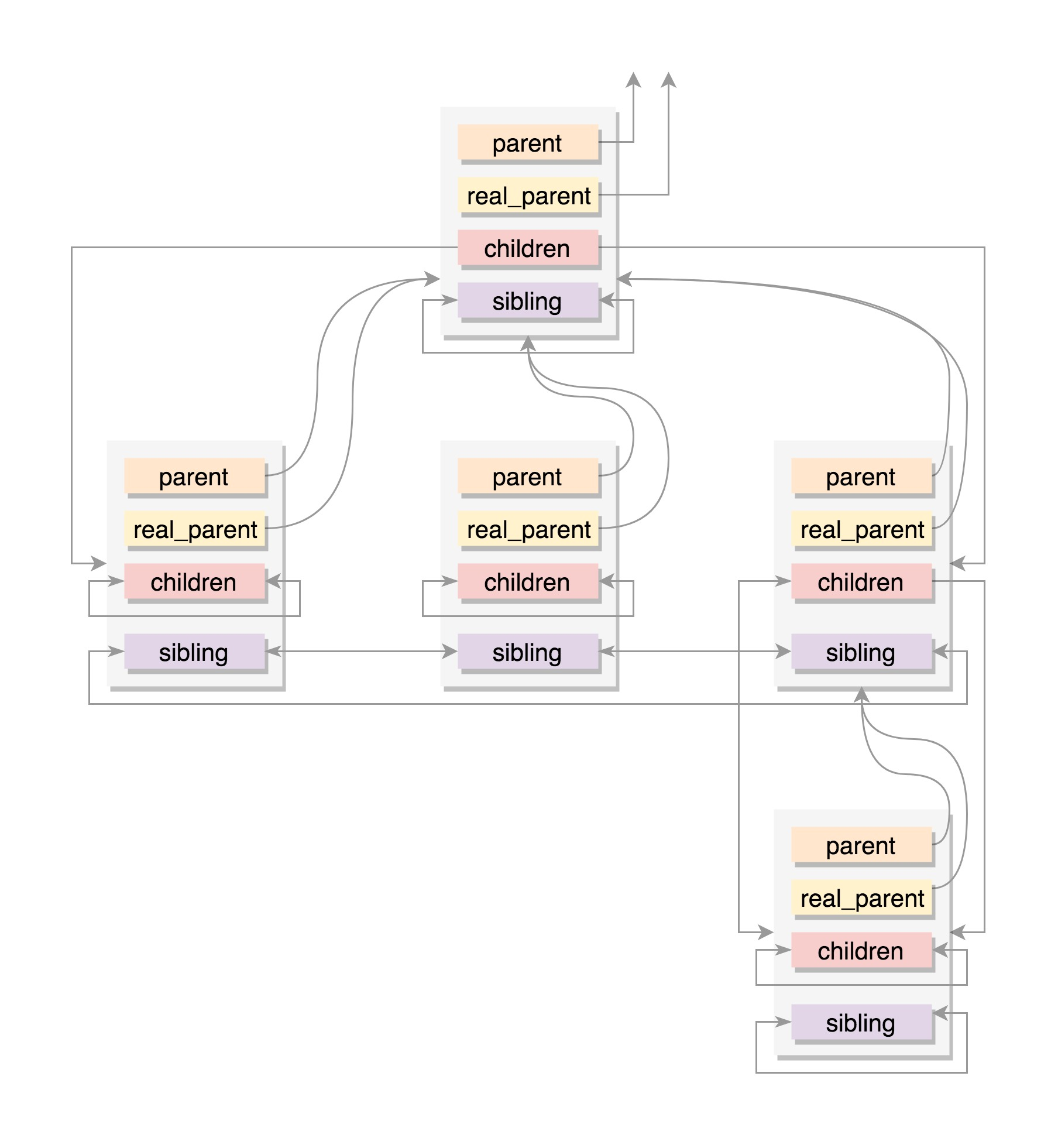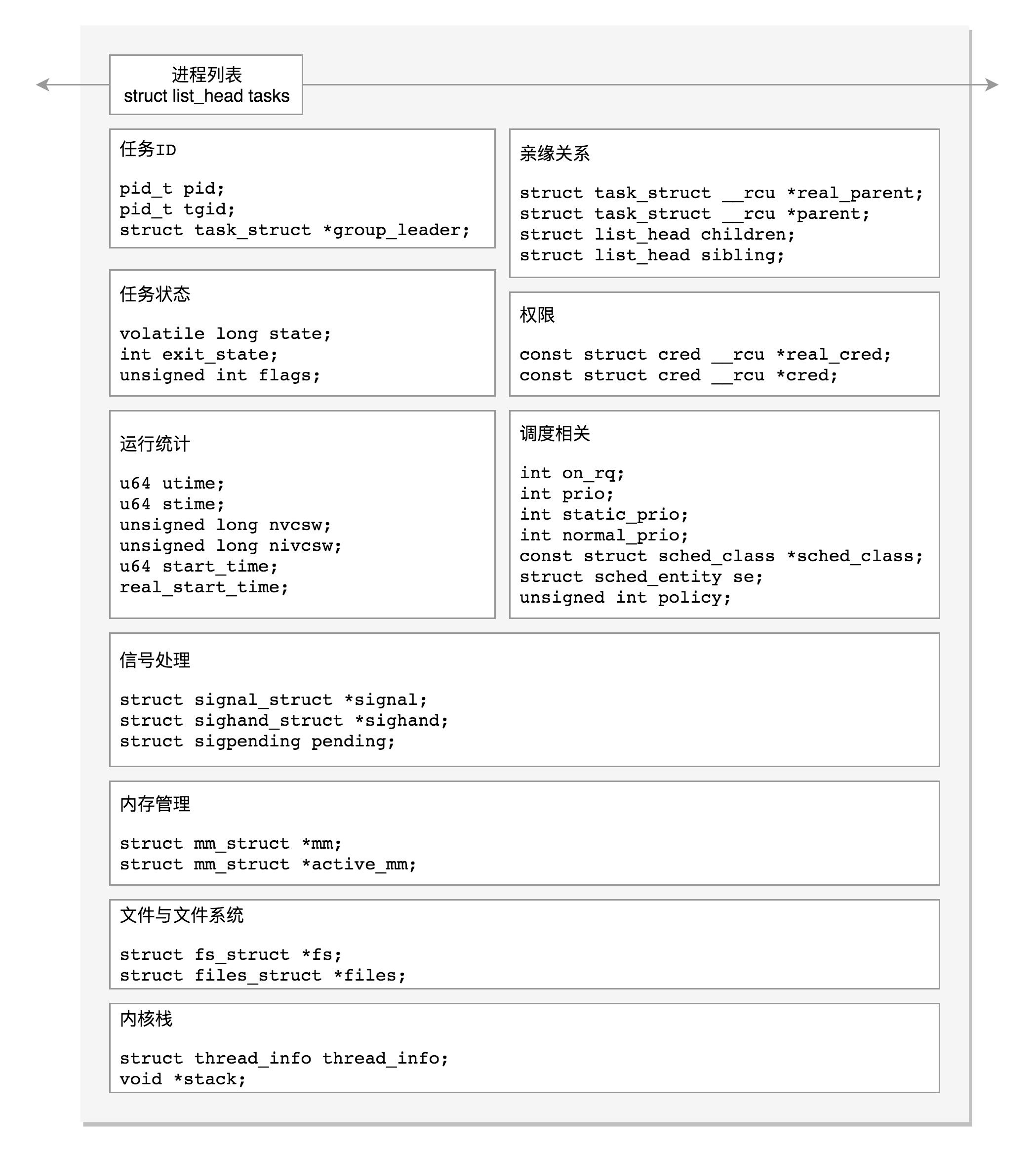运行统计信息
u64 utime;//用户态消耗的CPU时间u64 stime;//内核态消耗的CPU时间unsigned long nvcsw;//自愿(voluntary)上下文切换计数unsigned long nivcsw;//非自愿(involuntary)上下文切换计数u64 start_time;//进程启动时间,不包含睡眠时间u64 real_start_time;//进程启动时间,包含睡眠时间
进程亲缘关系
用树表示进程关系:
struct task_struct __rcu *real_parent; /* real parent process */struct task_struct __rcu *parent; /* recipient of SIGCHLD, wait4() reports */struct list_head children; /* list of my children */struct list_head sibling; /* linkage in my parent's children list */
- parent 指向其父进程。当它终止时,必须向它的父进程发送信号。
- children 表示链表的头部。链表中的所有元素都是它的子进程。
- sibling 用于把当前进程插入到兄弟链表中。

进程权限
/* Objective and real subjective task credentials (COW): */const struct cred __rcu *real_cred;/* Effective (overridable) subjective task credentials (COW): */const struct cred __rcu *cred;
所谓的权限,就是我能操纵谁,谁能操纵我。
- “谁能操作我”,很显然,这个时候我就是被操作的对象,就是 Objective,那个想操作我的就是 Subjective。
- “我能操作谁”,这个时候我就是 Subjective,那个要被我操作的就是 Objectvie。
- real_cred 就是说明谁能操作我这个进程
- cred 就是说明我这个进程能够操作谁。
cred 的定义:
struct cred {......kuid_t uid; /* real UID of the task */kgid_t gid; /* real GID of the task */kuid_t suid; /* saved UID of the task */kgid_t sgid; /* saved GID of the task */kuid_t euid; /* effective UID of the task */kgid_t egid; /* effective GID of the task */kuid_t fsuid; /* UID for VFS ops */kgid_t fsgid; /* GID for VFS ops */......kernel_cap_t cap_inheritable; /* caps our children can inherit */kernel_cap_t cap_permitted; /* caps we're permitted */kernel_cap_t cap_effective; /* caps we can actually use */kernel_cap_t cap_bset; /* capability bounding set */kernel_cap_t cap_ambient; /* Ambient capability set */......} __randomize_layout;
- 第一个是 uid 和 gid,注释是 real user/group id。一般情况下,谁启动的进程,就是谁的 ID。但是权限审核的时候,往往不比较这两个,也就是说不大起作用。
- 第二个是 euid 和 egid,注释是 effective user/group id。一看这个名字,就知道这个是起“作用”的。当这个进程要操作消息队列、共享内存、信号量等对象的时候,其实就是在比较这个用户和组是否有权限。
- 第三个是 fsuid 和 fsgid,也就是 filesystem user/group id。这个是对文件操作会审核的权限。
一般说来,fsuid、euid,和 uid 是一样的,fsgid、egid,和 gid 也是一样的。因为谁启动的进程,就应该审核启动的用户到底有没有这个权限。
Linux 中的权限控制
- 用户/用户组
- capabilities (更细粒度的权限控制)
内存管理
struct mm_struct *mm;struct mm_struct *active_mm;
文件与文件系统
/* Filesystem information: */struct fs_struct *fs;/* Open file information: */struct files_struct *files;
总结


